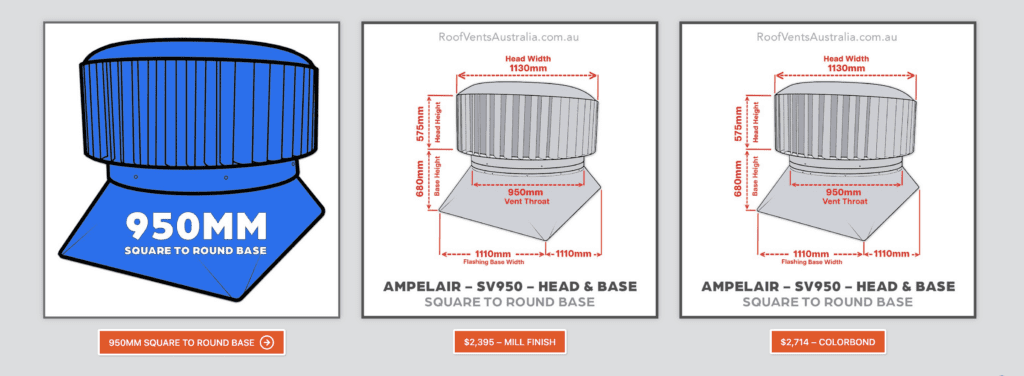Enhancing Indoor Air Quality & Customer Experience in Residential Buildings Across Australia
Whirlybird Roof Vents Installation packages Greater Sydney Area – Click Here >
Gutter Sumps to the Trade Shipped Free Australia Wide – Click Here >
Rain Heads to the Trade Shipped Free Australia Wide – Click Here >
Dambuster Rain Heads Shipped Free Australia Wide – Click Here >
Eco-Friendly Roofing Insulation Shipped Free – Click Here >
Introduction
This article reviews the imperative role that building orientation, roof-mounted exhaust fans, CO2 sensors, and customer service play in sustaining indoor air quality and customer satisfaction in various Australian cities, with an emphasis on Coffs Harbour, Darwin, Geelong, and Wollongong.
Building Orientation
The orientation of a building significantly impacts its energy consumption and indoor environmental quality. A study by the Australian Government’s Your Home highlights the importance of optimising building orientation for solar access and shading, essential for achieving comfortable indoor temperatures naturally.
Roof-Mounted Exhaust Fans
Darwin – Smokers 2019 Roof-Mounted Exhaust Fan
The Smokers 2019 roof-mounted exhaust fan in Darwin is a noteworthy product that aids in mitigating indoor pollution from smoking. It ensures efficient smoke extraction, contributing positively to indoor air quality and consequently, customer satisfaction ratings.
Geelong – Residential Roof-Mounted Ventilators
Geelong residents have embraced roof-mounted ventilators for their efficacy in improving indoor air quality by facilitating efficient air circulation. These devices have proven instrumental in reducing energy consumption, with the Sustainable House Day referencing multiple Geelong homes incorporating such solutions for more sustainable living.
Wollongong – Roof-Mounted Exhaust Fans
In Wollongong, the adoption of roof-mounted exhaust fans in residential buildings has seen a significant uptick. These installations are pivotal for combating indoor pollution and maintaining a healthy indoor environment, essential for resident satisfaction.
CO2 Sensors in Coffs Harbour
Carbon dioxide (CO2) sensors play a crucial role in monitoring and managing indoor air quality. In Coffs Harbour, there’s been a significant uptake of these sensors in various establishments, with a positive correlation observed between CO2 management, indoor air quality and customer satisfaction ratings.
Indoor Pollution
Indoor pollution is a significant health concern, necessitating the implementation of various mitigative technologies and practices. For instance, the World Health Organization (WHO) has documented the adverse health effects associated with indoor pollution, underscoring the importance of ventilation and pollution control for public health.
Customer Service Experience
Customer Satisfaction Ratings
In the realm of residential building products and services, customer satisfaction ratings are invaluable for gauging the efficacy and acceptability of various solutions. Firms that supply roof-mounted exhaust fans, CO2 sensors, and other related products invest considerably in customer service to foster positive user experiences and garner favourable satisfaction ratings.
Local Building Permits
Adherence to local building permits and regulations is non-negotiable when installing devices like roof-mounted ventilators and CO2 sensors. These permits ensure that installations comply with safety and performance standards stipulated by Australian building authorities, thus safeguarding the interests and well-being of residents.
Operable Windows
The incorporation of operable windows in residential buildings facilitates natural ventilation, essential for indoor air quality. These windows allow for seasonal adjustments, permitting increased airflow during warmer months and sealed environments during colder periods, contributing to energy-efficient climate control and improved resident satisfaction.
Limited Control
Residents often have limited control over the building orientation and the installation of certain devices. In such cases, adopting portable solutions like air purifiers and engaging in practices that enhance indoor air quality become paramount.
Conclusion
Achieving optimal indoor air quality and customer satisfaction in residential buildings in Australia necessitates a holistic approach incorporating building orientation, ventilation systems, air quality monitoring devices, and exemplary customer service. Adherence to local building permits and regulations further ensures that these installations not only meet but exceed the expectations of residents, fostering healthier and more satisfying living environments across the country. For individuals with limited control over their living spaces, adopting supplementary measures to improve air quality remains crucial. Through collective effort and compliance, Australians can continue to enjoy high-quality indoor environments that are conducive to their health and well-being.
Please note: Always consult with a qualified and licensed professional before undertaking any construction or renovation project to ensure compliance with all relevant laws and regulations.


